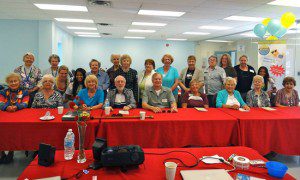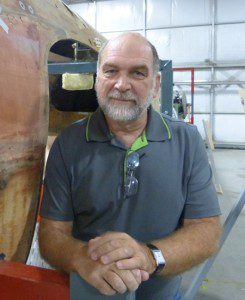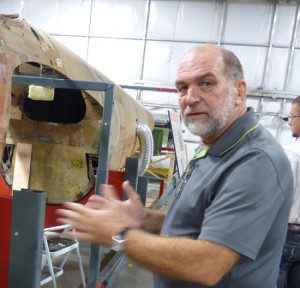
The two young women stood together at the front of the hall, the former pharmacy on the main floor of the Toronto Street medical building. They couldn’t have been more alike. They wore the same T-shirts decorated in a blue and yellow logo. They wore their hair the same – shoulder-length – and they even looked, well, identical. And when they spoke – like a married couple – they finished each other’s sentences.
“I still remember a year ago, thinking this might not work,” one said.
“Yeah, we’ve grown so much,” the other said. “There were only 15 people attending this time last year…”
“This year, there are over 30,” the first added.
The twin sisters, Natasha and Alisha Nanji, were introducing a special celebration and activity day for their clientele, several weeks ago. They had invited me to attend and tell my Great Escape story. When I learned who they were, who the audience was and why they had organized the celebration, I had to join the party.
You see, it was the first anniversary of inaugurating “Exploring Horizons,” their non-profit organization focusing on senior citizens, encouraging them “to participate in fun-filled and mentally challenging activities,” their website said. Along the way, the twins have received encouragement and financial assistance from the Uxbridge Rotary, the BIA and a variety of community businesses.

“We couldn’t be more grateful or excited,” they both commented.
It turns out that the two former Uxbridgers have their sights set on university studies in social services and community building. But I couldn’t help thinking how focused these two young women appeared. They had obviously done their homework, found the right backup resources in our town and then pulled everything together – with military-like precision – into a full Saturday of activities and presentations by such people as Ron Martyn, Lee Davies and myself to name a few. They were driven to a goal and achieved it.

By coincidence, this past week on the other side of the country, I happened to meet another Canadian, equally driven. But he’s motivated to a slightly different goal. At 58, Jack McWilliam is one of those rare Canadians who’s worked for the same employer for most of his professional life. As an aircraft engineer, he has maintained the engines of Lear jets, bush planes and single-engine weekend flying club planes for the past 30 years. That’s been his vocation. His avocation, however, came into his life about eight years ago. At an aircraft museum in Texas a local resident learned he was from Calgary.
“Say, Jack, why would Calgary sell off a Mosquito airplane?” he asked.
McWilliam returned to Calgary to discover that the city was about to unload a vintage Mosquito fighter-bomber, the ones built (in Canada by de Havilland) of plywood for high-speed, low-level reconnaissance and bombing of Luftwaffe aerodromes during the Second World War.
McWilliam learned about the effort to spare the historic “war bird” from being sold to an offshore collector. He joined the Calgary Mosquito Society and because of his expertise, took the lead in the long-term restoration of the Mosquito at the Bomber Command Museum of Canada south of Calgary. McWilliam’s avocation has now taken over much of his life. On Tuesday nights he drives to the BCMC in Nanton, Alta., to brainstorm with the dozen or so other members of the restoration team. Then on Saturdays he sweats it out at Nanton with the volunteers.

“I’ve studied the plane. I’ve researched it. And I’ve stepped outside the box,” he said. “I’ve got cabinet-makers, I’ve got plastics experts. I’m now pursuing things like 3-D scanning and imaging, rather than building old-fashion templates.”
I stood next to the Mosquito in the BCMC hangar, last week, as I interviewed McWilliam. It remains little more than a shell, but perfectly safe in its own custom-made cradle. I asked Jack about the budget and the duration of the project and he told me the work on the Mosquito is budgeted at $1 million and will take a decade to complete. He seemed undaunted.

“The director of another museum came up to me and said, ‘You’re wasting your time on this. You’re going to be dead before it’s done,’” McWilliam said. “And I said, ‘I may be dead, but it’ll get done.’”
There was a wonderful look in his eye – half that of a child in love with his favourite toy, the other half a seasoned mechanic hell-bent on proving the museum director wrong.
At the end of my presentation, earlier this month, to the first anniversary of the Exploring Horizons, the Natasha and Alisha Nanji led the audience of seniors in a hearty round of applause. They offered a touching thank-you, and I thought, “What a professional pair of adults.” But then they showed their true inner selves, by gathering all their family members around me for a huge “selfie” of them and me.
I guess you can be driven and still be a kid at heart.